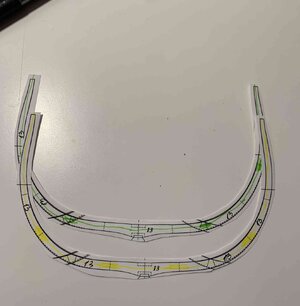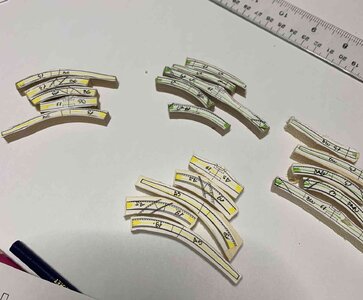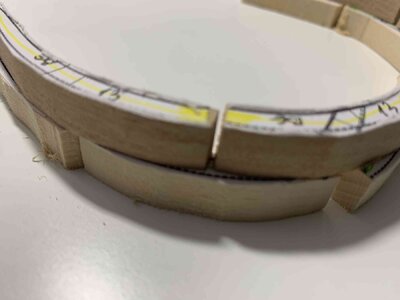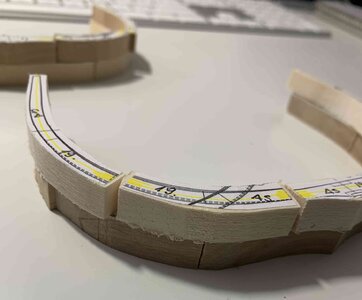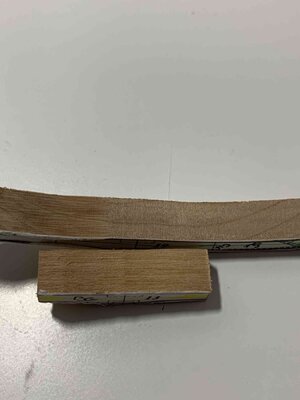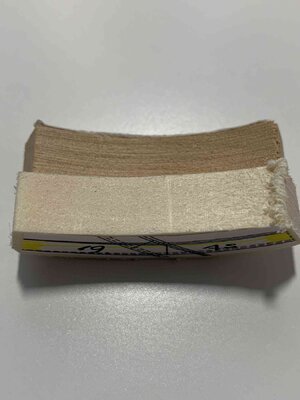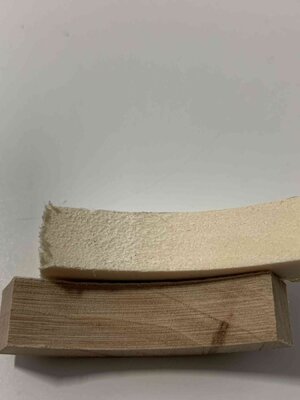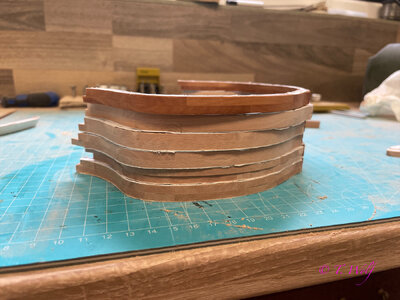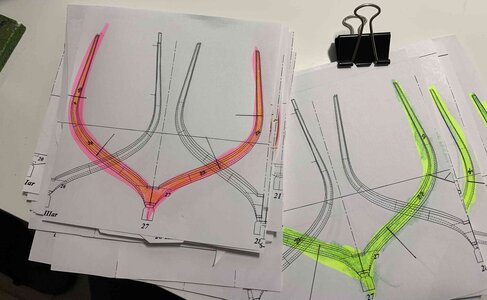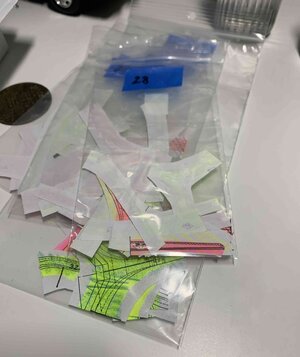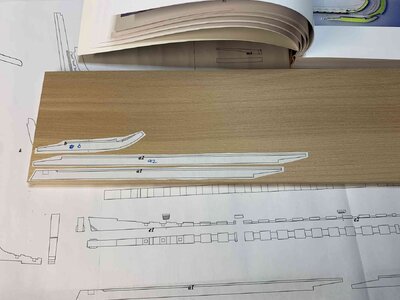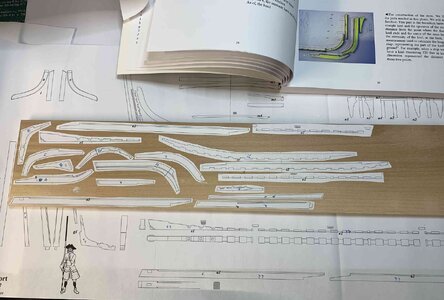Good morning Moreplovac,
I can only agree with Oliver. Basswood is a very good wood for filling gaps when you have a closed hull or for the first planking. It is often included in kits. It is not really suitable for POF construction as it is too soft. Cherry is good, but I can't say anything about aspen. Beech is also good but the grain is too coarse for my taste. Pear is clearly the favorite, Oliver is talking about the Swiss pear, the tree is actually called service tree and has nothing to do with a pear. The wood is identical though and has a very fine grain. Boxwood or Castello are also great woods, you can also use holly here, both are expensive types of wood. If I were you, I would stick to one type of wood for the frames, even if you make them from the same wooden board, you will be able to distinguish the individual parts from one another easily after oiling or varnishing.
View attachment 444975
Here are my first test frames untreated and the upper one oiled.



